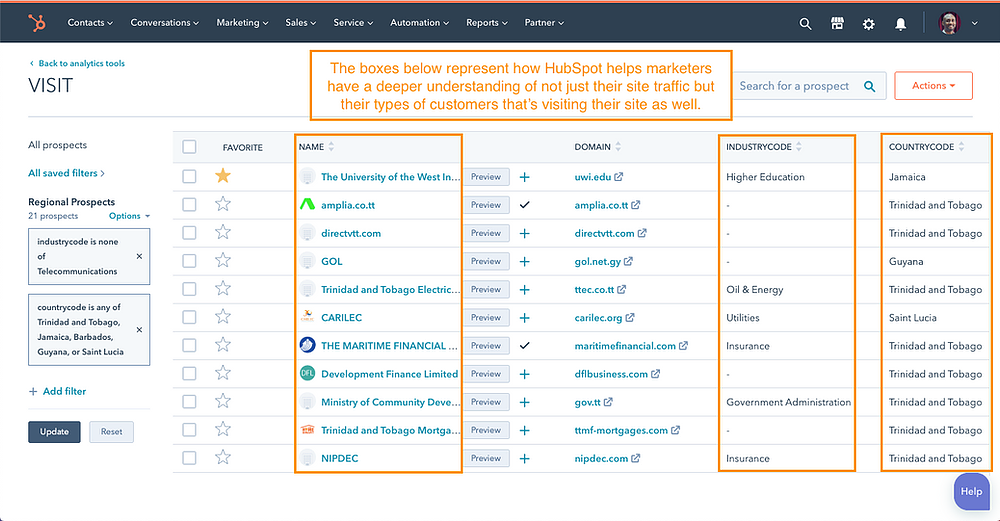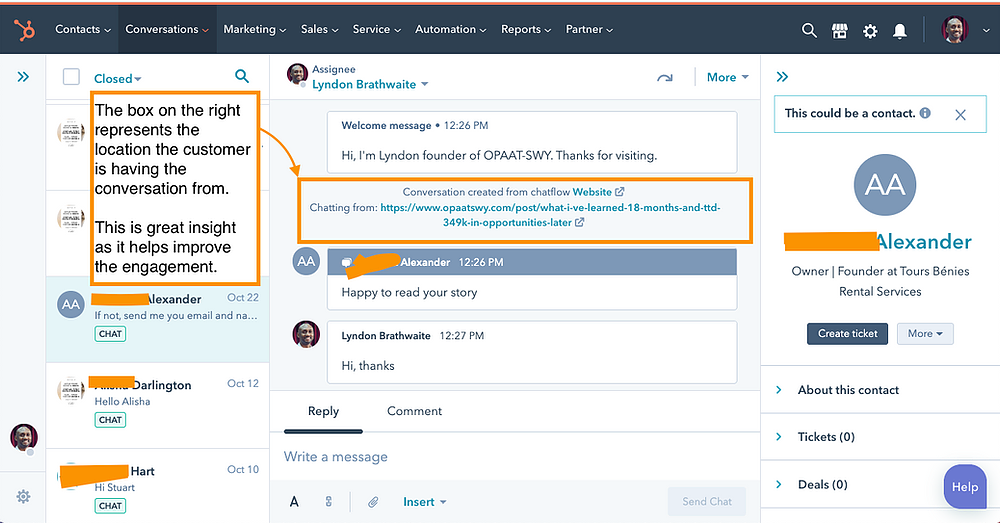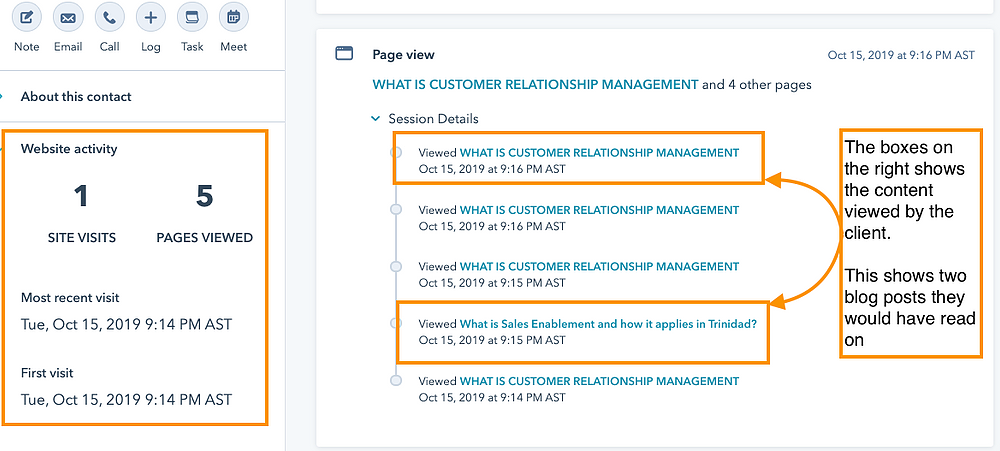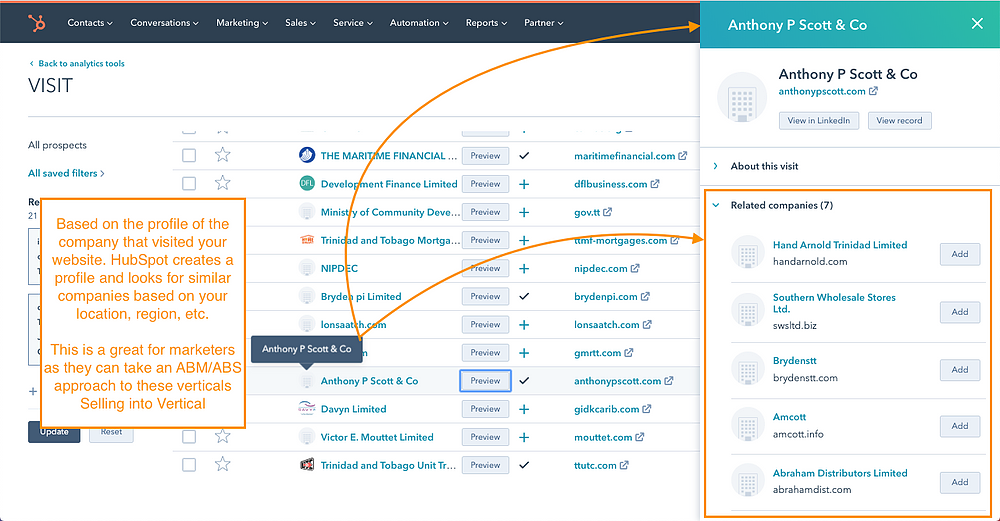Why?
- Mend a broken relationship (Sales & Marketing)
- It provides deeper insight into the buyer
- Data = Strategy = Activity = Opportunities = More Deals
Something to remember - prospecting is the lifeblood of any business
The second thing to remember is that sales professionals hate prospecting or they don't do it enough to have sustainable, successful sales careers. Even if they are doing it, then there's the question of the quality of the lead/prospect.
1 - Mending A Broken Relationship
There is a broken relationship between sales and marketing teams as it relates to sales numbers. However, each year there is a consistent objective on every sales professional's KPI which is to identify new business. While sales teams may implement traditional or innovative techniques to attract new business, there is one underutilized asset that marketing is sitting on that can drastically improve the sales activities towards those numbers.
What is it? It's their website or CMS (Content Management System)
Apart from the standard Google Analytics data, HubSpot CRM takes things one step further and actually identifies the respective company that's on your site. Remember, your website is an asset that falls into your sales process and should be used as a magnet to attract and engage clients in their buyer's journey.

HubSpot Analytics Tool_Filtered
By connecting HubSpot to your website it gives marketing an idea of not just your site's traffic, but the type of prospects visiting the site. This analytical information is valuable to both sales and marketing as it allows the leaders of each team to work together to develop strategic campaigns for that client or group of clients.
To be a bit more granular, HubSpot allows you to filter the report by industry, region, number of visits, etc. that way you get a specific understanding of who has visited, and then you can go into what they are looking at later on.
2 - Deeper Buyer Insight
Wouldn't it be great if you knew exactly what customers were interested in? How would that help you engage or approach the sale?
As a client visits the site, HubSpot starts tracking their activity throughout their visit. Once they start a chat or makes a request for more information and leaves info to be contacted the CRM logs that entire engagement and notifies the respective department/representative.


With information like this, sales and marketing get the ability to understand their buyer's journey and can implement an engagement strategy with marketing or assign it as a marketing lead to a sales professional. The sales professional can then engage this client as a warm lead and begin building the relationship and identifying needs from there.
It's important to note that this reinforces the fact that customers are doing their research on your site before they engage with you directly. Forrester's research indicated that 57% of the buyer's journey is already completed before a prospect reaches out to a supplier.
Question: How is your website supporting this part of the buyer's journey to help you increase your sales? Give it some thought, we'll address this later.
3 - Data = Strategy = Activity = Opportunities = More Deals
I'm sure every sales professional would love qualified opportunities in their inbox.
Well, HubSpot's analytics tool isn't gonna give you leads in your inbox but it will certainly help you identify and understand the types of companies you should be looking at based on who has visited your site.
Why is that important? It gives the company the opportunity to implement an approach to go after vertical markets.
Read: A Strategic 2020 Approach to Selling into Vertical Markets
The image below illustrates how HubSpot looked at the profile of one such prospect (Anthony P. Scott) and produced a list (related companies) of similar companies via industry and location/country that the sales and marketing team can go after.
To put it another way, it's like shopping at Amazon where Amazon looks at your history and makes suggestions on the things you may be interested in. In this case, you are not the buyer but the seller.
Sounds crazy right!!!
This is game-changing because most CRMs just track team activity, meetings, reports, etc. so to have a tool that helps marketing help sales activities is an over the top value add.

If you've noticed anything about the examples above it would be that all of the activity stemmed from having one of the most important digital assets in 2020 which is your website. Your website is your digital HQ. It's one of the first areas customers start engaging with your company - to understand more about you, what you do, the value you offer, and how you can help them.
The other component of having your website is having content that's contextual, relevant, and addresses the specific problems your prospects are facing. Contextual content attracts prospects and allows the sales team to strategically use it in their sales process to help qualify and move prospects down the sales funnel.
Read The Content Trap: Content Is Not King! by Keron Rose
There are many different reasons that companies decide to adopt and implement a CRM into their environment. CRMs have evolved from robust excel spreadsheets into data capturing software into dynamic, intuitive, and scalable tools that help pull departments together and helps companies GROW.
HubSpot is one of those CRMs and helping companies grow has been one of the main objectives over many years.



.png?width=575&name=OPAAT-SWY%20Youtube%20Artwork%20(1).png)
Comments